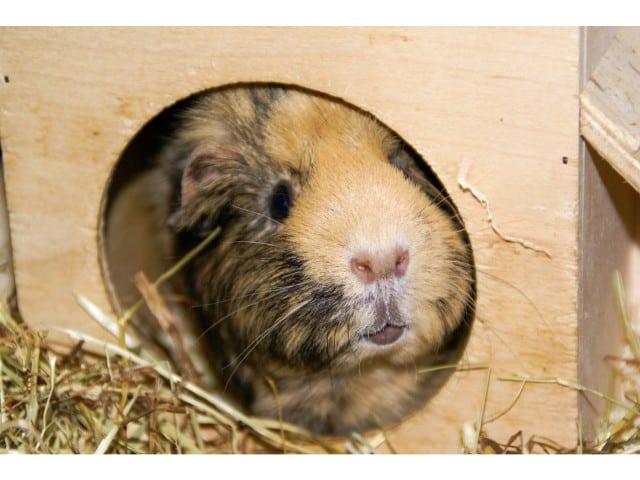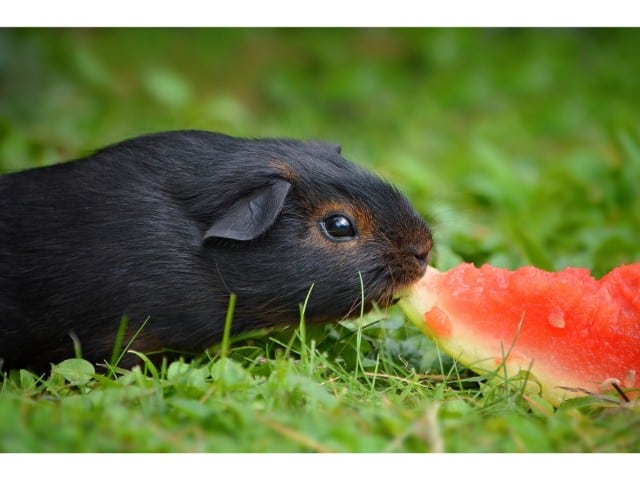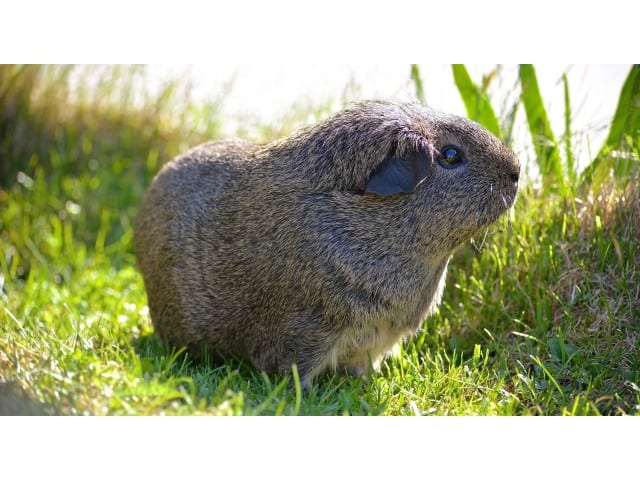During the summer months, there are some people who love it while others who despise it. With the two sides at polarising ends, it may leave us wondering which side do guinea pigs fall? Do guinea pigs enjoy the hot summer weather or suffer during those scorching summer days? Also, How to keep your guinea pigs cool in summer?
Guinea pigs enjoy a moderate and stable environment to live in. If the temperature outside is under 25°C, then there is no need to worry. However, if it goes anything above that, then you might need to take additional measures to keep them safe. The proposals include moving them to a cool spot, providing shade, hydration, and helping them cool down.
So, now that you know how much is too hot for your guinea pigs, the next thing to look into is whether you want to keep them inside or outside? Although it is recommended to house them inside if the temperature in your area goes above 25°C.
However, You can accommodate them both inside and outside by taking some precautions. Let us look at the measures we need to take to keep our guinea pigs cool in summer both inside and outside.
How to keep guinea pigs cool inside?
Keeping your guinea pig cool in summer is extremely important as they are prone to heatstroke.
Guinea pigs don’t sweat like humans, and thus, they maintain their body temperature through blood flow from their ear, which is not as efficient as other animals.
So, we need to ensure that we maintain an adequate living environment for them. Here are a few steps you can take to keep them cool in summer inside:
Refresh and Refill the water bottles:
Guinea needs a lot of water during the summer heat. In general, a guinea pig can drink anywhere between 50ml to 200ml of water daily.
However, they tend to drink a little more during the summer season, so make sure you check the water regularly and top it up with fresh cold water.
Guinea pigs don’t drink warm water, so supplying or changing the water every few hours will encourage them to drink more, and thus, they will remain hydrated and cool.
However, avoid water that is too cold as it can be bad for their health and guinea pigs also don’t enjoy that as much.
Feeding watery vegetables and leafy greens:
Feeding watery veggies like cucumber, zucchini, melons, etc. are excellent ways to keep up with hydration.
A cool piece of cucumber from the fridge remains cold for a prolonged period and can be a great summer treat.
However, make sure you don’t get carried away and end up feeding a lot as it can lead to diarrhea among them.
Also, make sure you remove any uneaten veggies within a few hours itself as uneaten food can attract a lot of flies and bacteria towards them.
Regular brushing and Hair trimming helps:
Long hair guinea pigs are more prone to heatstroke as compared to short-haired breeds.
Trimming the hair of long-haired guinea pig is exceptionally efficient as it helps them cool down a little bit.
Regular brushing your guinea pig breed is also essential as it helps in removing knots in the hair.
Guinea pigs do shed a bit more as summer arrives to lose out excess hair from their coat. Thus, brushing them also helps to remove the excess hair stuck in the coat.
Misting them with spray bottles:
If your guinea pigs enjoy a gentle mist spray, then give them one. Misting cold water helps in lowering the temperature of their body and is often an excellent way to keep them fresh on a hot summer day.
Cover the cage with a cool, damp towel:
Covering the cage of your guinea pig with a cold, damp towel often helps to remove excess heat from the cage and also serves as an extra layer of insulation for the pen.
You can also turn on a fan towards the wet towel, which will blow mild cold air inside the cage. There are a few things you need to keep an eye on if you are doing so.
The first thing is making sure you cover only a part of the cage to allow for enough air exchange.
The second thing to note is to make sure you don’t cover the cage entirely with a wet towel as dripping water can soak your guinea pigs, which can make them sick.
Make a DIY Hidey Ice cushion for your guinea pigs:
Hidey ice cushions are an excellent addition for summers in the cage. However, there is no good one available out there, so you might need to DIY the whole thing.
It’s quite simple, though. Measure the hidey first then cut a piece of fleece(alternatively use old pillow cover) of the same size of the hidey in the form of two circles.
Then sew both the circle halfway through and then put the icepacks and cotton stuffing inside.
Now you can sew the other half of the circle and place the same in the freezer until it’s cold enough for your guinea pigs.
You can then put the cushions into their cage whenever you have hot weather outside.
Add some hiding spots in the cage:
Consider adding some hiding spots in the cage where guinea pigs can rest and escape from the heat as well.

You can use a fleece or cardboard boxes or a wooden hideout for them. Avoid plastic shelters during summer as they can radiate heat; thus, they heat up quickly.
Place a tile/brick in the cage:
Placing a ceramic or porcelain tile in the cage of your guinea pig can be an excellent trick to give a try.
These tiles are always cool to touch, no matter how the weather is. Guinea pigs love to lie down on these tiles whenever they feel overheated.
Make sure the tile has no sharp edges and is placed securely to avoid any hazards.
Add a self-cooling mat:
Adding a self-cooling mat into the cage is a luxury for your guinea pigs. If the temperature in your area gets hot during summer, then you should consider adding one into their enclosure.
Just like tiles, self-cooling mats are an excellent way to cool down the body temperature and get instant relief from the heat.
Your guinea pig will love to lie around these cool mats during those hot summer days.
Consider moving the cage:
If you live in a home with lots of windows and drafts, then you should consider moving your guinea pigs to the central part of the house.
Usually, the room at the center gets the least amount of direct sunlight and direct radiated heat through walls.
Thus, it remains quite cooler than in other parts of your house. Moving your guinea pig’s cage to the center is an excellent way to maintain a cool living environment for them.
Cover the windows:
It is no brainer that closing all the windows and doors, and drawing curtains over them will help to keep the room cool when the temperature outside is scorching and humid.
You can also you dark out curtains to prevent radiating heat, thus keeping the room cool.
Closing the windows and doors also avoid waves of heat from entering our home, which is crucial during hot summer days.
Using a fan or air conditioner:
Using a fan to create a flow of air can help to keep your guinea pigs cool. However, make sure the fan doesn’t blow directly on them.
In extreme heat conditions, you can also use an air conditioner to cool down your house or a room where you house your guinea pigs.
Add Icepacks/Gel packs in the cage:
Icepacks or Gel packs also work great when placed in a guinea pig cage.
Just make sure you wrap it securely with a pillow cover or old socks so that your guinea pigs can’t chew on them.
Your guinea pigs love to lie around the packs as cold air makes the surrounding cage area cool.
How to keep guinea pigs cool outside?
Keeping your guinea pigs cool outside can be a hassle for many people, especially if you live in an area where the temperature in summer rises above 25°C(77°F).
Heatwaves and direct sunlight can be another significant issue that can add to the misery.
However, if you know the right way, then even on a hot summer day, you can house your guinea pigs outside with ease.
Consider moving them indoors:
If the heat waves in your area get intense, then you might need to consider moving your guinea pigs indoors.
The temperature inside your home is definitely going to be quite lower as compared to outside.
Thus, it is no brainer that moving your guinea pig inside in those hot summer days can be a wise decision to make.
However, make sure you don’t keep your guinea pigs in the kitchen or laundry rooms. Guinea pigs are sensitive to smell and noise; thus, the smell from the kitchen and sounds from the washer-dryer can be hazardous for their health.
You can use a Midwest cage or any Playpen to house your guinea pigs inside for a few days.
Keep away from patios and open lawns:
Keep the hutch away from patios and open lawn during the summer season. Patios often trap and radiate heat around their surrounding area, which can make the temperature around it to rise significantly.
Open gardens are no exception as the direct sunlight all around the day can make the surrounding temperature significantly high.
Thus, housing your guinea pigs around such places is the wrong decision to make. At all costs, keep your guinea pigs enclosure away from open lawns and patios.
Move the hutch into shady areas:
If possible, move your guinea pigs in a north or east-facing garden spots as these areas don’t get sun throughout the day.
If you don’t have much space in your home, consider moving their hutch under a shade of a tree. A parasol can also work for you if you don’t have any other options available.
The key takeaway is to move their hutch into a shady location where the hot breeze and sun cannot reach it directly if you can’t move them into a safe spot it is recommended to house them inside your home temporarily.
Avoid uninsulated sheds or garage:
Housing your guinea pig in an uninsulated shed or garage can be even more hazardous then keeping them outside.
Often the heat level can rise twice as high inside such shed than out. Pair it with a high humidity level, and it is more like a death trap for your guinea pigs.
So, you must be cautious to avoid housing your guinea pigs in such places during hot summer days. Also, make sure you never house your guinea pigs inside a poorly ventilated shed as good airflow is a must for them.
Consider partially covering the front of the hutch with damp clothes:
Partially covering your front portion of the hutch with a damp towel or any other cloth can help in keeping the hutch cool from inside.
The air that blows from the front side will get colder as it comes in contact with a damp towel, and that will make the hutch cool from inside.
It also adds an extra layer of insulation in the hutch, which is excellent to keep the temperature low.
Provide more than one source of water:
Providing multiple sources of water is essential during the hot summer months. Guinea pigs tend to drink more water during hot weather.
Also, hot weather can make the water warm, which your guinea pigs might not drink and end up getting dehydrated.
Thus, having multiple sources of water is essential to ensure your guinea pigs remain hydrated in summer.
If you house more than one guinea pig in the cage, then it is also crucial to have more than one water bottle.
Some guinea pigs can get territorial, and they don’t want to share their food and water. In such cases having multiple foods and water dishes help a lot.
Provide icepacks:
Throwing some icepacks into your guinea pigs hutch is always an excellent way to keep your guinea pigs cool.
If the weather gets too hot, you can consider throwing some icepacks securely wrapped in fleece, old socks, or even pillow cover into the cage.
Your guinea pigs will love to lie around the packs as the surrounding area gets a little cold due to icepacks.
Wiping or misting your guinea pigs:
Misting your guinea pigs or wiping them with a cold water towel can help cool their body temperature a lot.
Make sure you do it gently, and your guinea pigs are comfortable with it. While some guinea pigs enjoy a cold mist bath, others don’t.
However, it is an excellent way to cool down their body temperature if it is scorching outside.
Provide watery vegetables:
Water vegetables like cucumber, melons, etc. are a great addition to your guinea pig’s diet.

They not only provide your guinea pigs with essential nutrients but also helps in keeping them hydrated.
However, make sure you don’t get carried away and serve too much of it as overfeeding often leads to digestive issues in guinea pigs.
Use a thermometer in the hutch:
Adding a smart thermometer or even a normal one can in the cage helps you closely monitor the temperature around the cage.
If you find the temperature to be abnormally high, then you might take some steps to bring it back to normal.
Make sure the temperature stays between 18 and 24 °C, as it is the ideal temperature range for your guinea pigs.
Avoid frozen treats:
Many people are often tempted to offer frozen treats in the form of vegetables and fruits to their guinea pigs.
However, it is not a wise move to do so. Some guinea pigs hurt their lips and tongue, trying to nibble at those treats.
Frozen treats also cause digestive issues in guinea pigs, so it is best to avoid it.
Changing the bedding frequently:
It is essential to frequently change the bedding of your guinea pigs during the summer season because the risk of flystrike is very high during this time.
Moist and soiled bedding can be a breeding zone for flies to lay their eggs. Also, ill and elderly guinea pigs are at high risks as they cannot clean their genital areas, which attracts more flies to lay their eggs.
The maggots that come out from those eggs often start feeding the exposed flesh of your guinea pigs and in most cases, can claim your guinea pig’s life if vet treatment is not provided immediately. Thus, changing the bedding frequently can be a lifesaver in those summer months.
Sources: American Journal of Physiology, The Physiological Society, Springerlink, Sciencedirect, Journal of general physiology.
